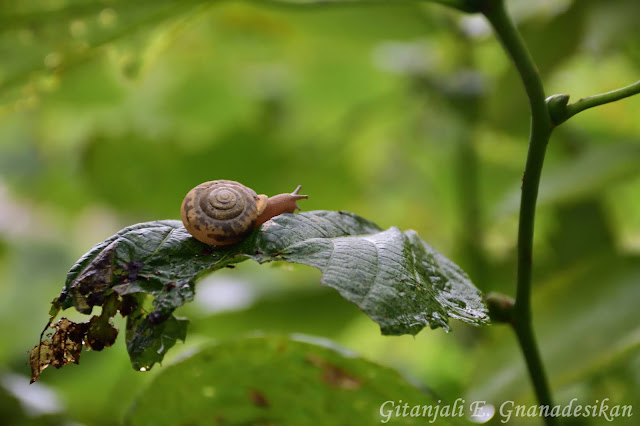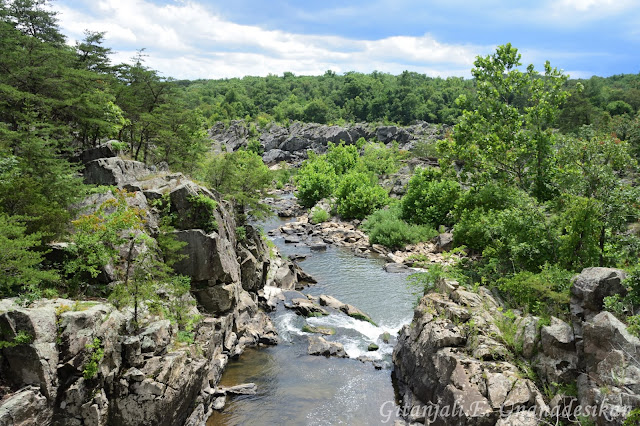Whew, it's been a busy summer. I finally got back to looking at this last set of photos from my trip back east in June. After visiting Great Falls, we walked a few miles along the Chesapeake and Ohio Canal towpath. The canal parallels the Potomac River, but of course is calm and glassy, unlike the rapids nearby.

Construction on the Chesapeake and Ohio Canal began in 1828 and was abandoned in 1850, by which point it was already effectively obsolete—given the construction of the Baltimore & Ohio railroad—although the 184.5 miles between D.C. and Cumberland were used to some extent until 1924.

The canal includes 74 locks which lifted boats by over 600 feet over the course of their journey.

The Charles F. Mercer is a replica canal boat. I believe in non-pandemic times they actually do mule-drawn boat rides.
Some of the locks are clearly operational, while others are quite overgrown.
There are also a variety of other structures along the canal, including turning basins...
Dams...
Lockhouses and their remains...
The park is also
home to the Washington Aqueduct, which diverts water from just upstream of Great Falls to provide water to the capitol.
But honestly, the best parts of the canal, in my opinion, were the lovely flora and fauna. (I mean, I am a biologist!) This eastern kingbird (Tyrannus tyrannus) was darting about catching insects, but cooperatively perched briefly on this branch for just long enough for me to get a clear shot.
As we walked along the canal, a pair of great blue herons (Ardea herodias) flew down the canal and right over our heads. The first photo I got was just a blur, but here's a silhouette from a moment later, as they headed towards the falls.
Several red-winged blackbirds (Agelaius phoeniceus) were out and about too.
And this double-crested cormorant (Nannopterum auritum) was sunning itself on the opposite bank of the canal.
There were lots of bright flowers along the sides of the path, including this woodland sunflower (Helianthus divaricatus)...
Pickerelweed (Pontederia cordata)...
Purple coneflower (Echinacea purpurea)...
Oxeye daisy (Leucanthemum vulgare)...
And this cute little Deptford pink (Dianthus armeria).
I was visiting during wineberry (
Rubus phoenicolasius) season, and really enjoyed snacking on wineberries on many of our walks. If you haven't heard of wineberries, check out this
blogpost on these very yummy invasives.
Much to my delight, there were lots of turtles—of several species—enjoying both the water and the sun. This red-eared slider (Trachemys scripta elegans) is aptly named after the very distinctive red stripe behind its eye.
This relatively small snapping turtle (Chelydra serpentina) seemed to be enjoying the shallow mud.
This eastern painted turtle (Chrysemys picta picta) was swimming in the canal, but many more (both eastern painted turtles and red-eared sliders) were out sunning themselves.
This photo shows more clearly why they are called painted turtles: look at that lovely red on their undersides!
The invertebrates put on a great showing too. This eastern eyed click beetle (Alaus oculatus) was stunning.
We saw several pearl crescents (Phyciodes tharos) flitting about.
And many widow skimmers (Libellula luctuosa) too.
I was very excited to spot this cute land snail, but I have no idea what species it is. Anyone know anything about them?
Do you see it?
Just at the end of our walk, we came across an epic standoff between an eastern garter snake (Thamnophis sirtalis sirtalis) and an adult Fowler's toad.
In the end, the toad outlasted the garter snake, who gave up and slithered off the side of the path.
It was really a beautiful afternoon, and I'd love to go back and spend more time along the C&O canal sometime!




























































